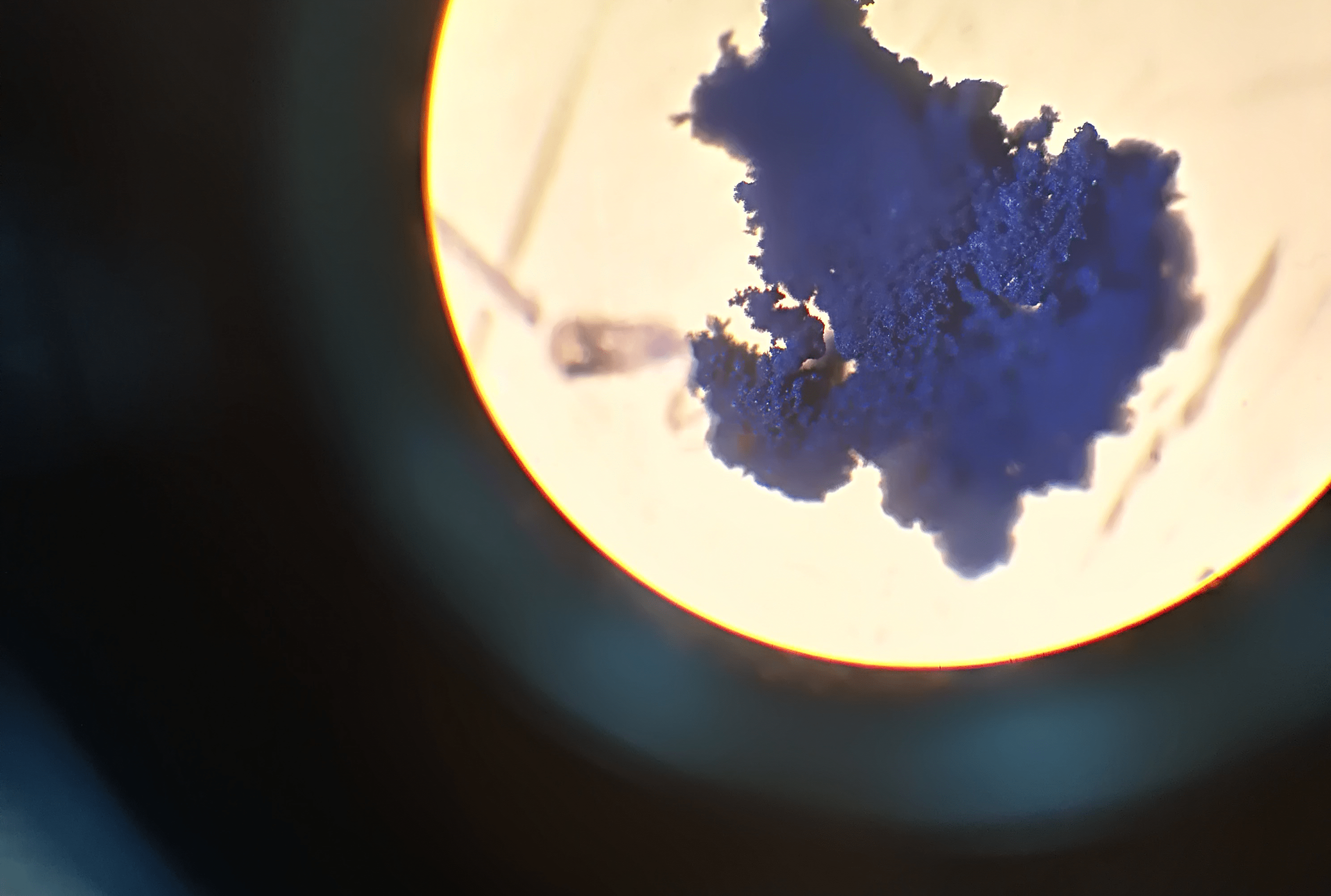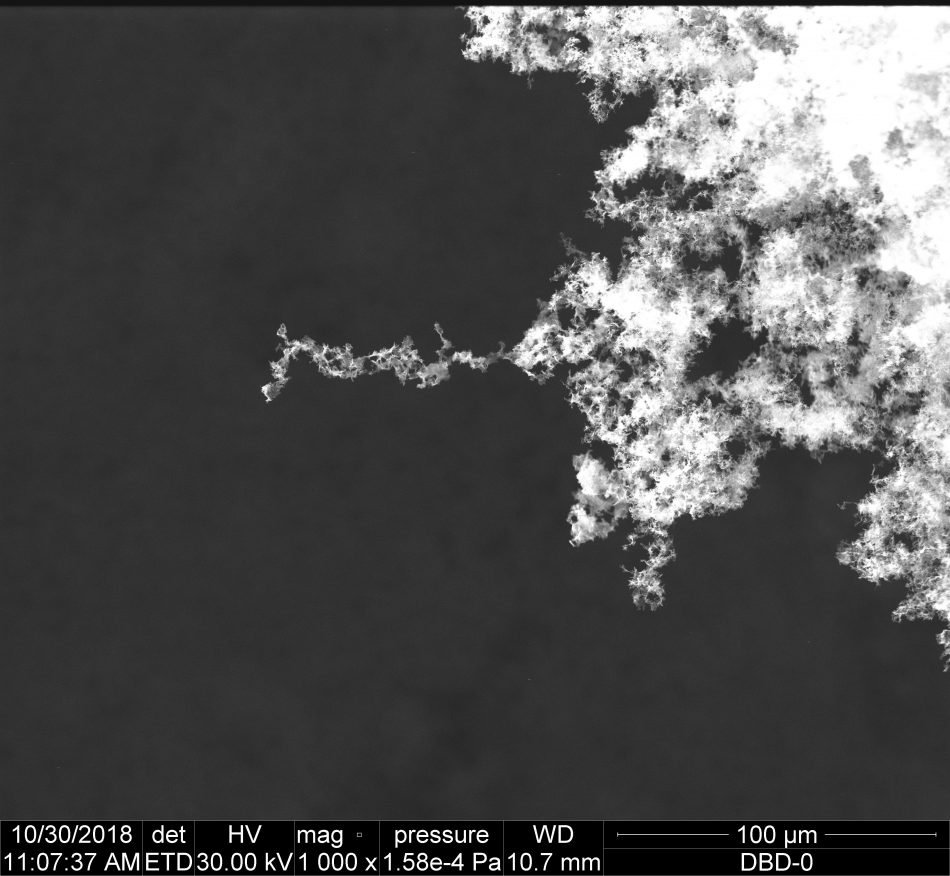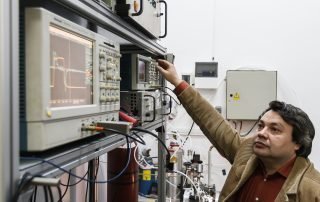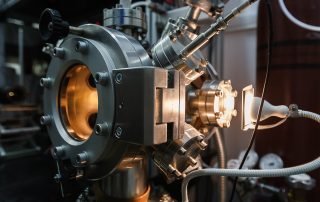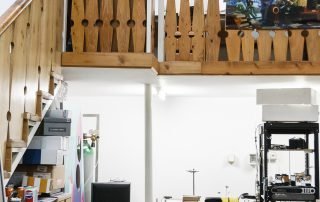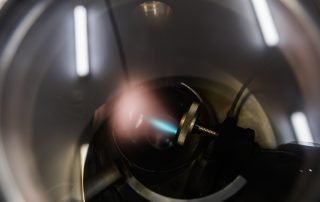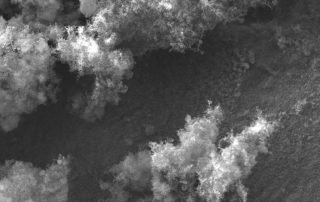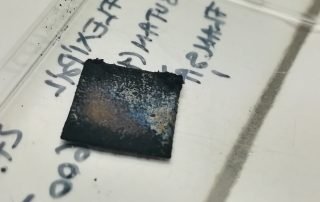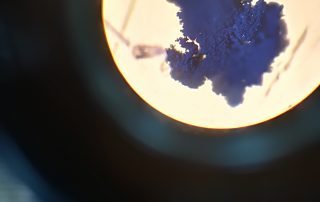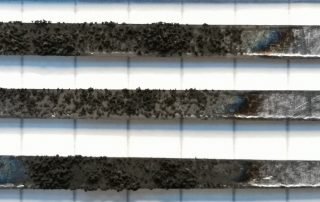Each week, a couple of milligrams of artificial stardust are being produced at the Faculty of Physics. A research team created a special kind of carbon dust which, at a closer look, seems almost identical to the organic matter to be found tens of thousands light years away in space. The accomplishment combines two firsts. Both the method used to produce the dust and the „fluffy” and chaotic aspect of the aggregate are unique.
The study coordinator, Physics lecturer Ionuț Topală, says that the lab-produced dust will allow the scientific community to better understand how space matter evolves and what happens when it meets strong radiation or comets. Such studies can only be conducted in the lab, using artificial compounds. Otherwise, if researchers would limit their science to observing what happens far far away, it would be quite a time-consuming task. Those few milligrams produced weekly in Iași need several hundreds of million years to naturally form in space.
At the very core of our galaxy, 25.000 light-years away, a place too far to dream of ever going, there is stellar dust. „Although we can’t see it, we know for a fact that it exists. We deduce this by measuring radio signals that come back from that part of the cosmos and also by paying attention to the emitted and absorbed radiations. By analysing them, we can literally draw a chemical map of the area”, explains Ionuț Topală. The interstellar dust is different from our usual allergy triggering terrestrial dust, and even from the comet dust or the kind that floats around planets. Mankind has acknowledged the existence of this mysterious dust only through measurements done with infrared telescopes. As a result, we now know that the interstellar dust consists mainly of carbon or silica, and sometimes of ice. Since its detection, in 1983, scientists have been trying to recreate similar chemical combinations here, on Earth.
Until now, only a few international laboratories generated interstellar dust, but only in conditions of very high temperatures or very low pressures. Moreover, what resulted from these experiments, when observed under the microscope, looks organized and „disciplined”, like a thin film layer.
The researchers and doctoral students in Iași created, at normal temperature and pressure conditions, dust „flakes”, chaotic and unpredictable in terms of 3D organization. Although there is no direct observational evidence, these carbon aggregates are clearly more alike to those in the deep cosmic space, where gravity is too weak to matter. The findings were published in the December issue of „Monthly Notices of the Royal Astronomical Society”, edited by Oxford University Press.
„The method that led us to this result represents a major breakthrough”, explains Valentin Pohoață, member of the research team. „Practically, we have two ordinary gases – butane and helium – that form a plasma, once introduced in a very intense electrical field. This environment works like a pair of scissors that cuts gas molecules into pieces. When the fragments recombine, the dust particles emerge and part of the butane mother-molecules convert into solid state.”
This solid dust has nothing in common with most of the solid objects around us. When we look closely inside of them, we see a logical organization, a crystalline network. However, the stardust in the laboratory presents a different picture: the molecules are displayed chaotically, respecting no rule or apparent predictability. The research group named decided to call them „fluffy”.
After it is synthesised, each sample of the dust is carefully examined with laboratory equipment. In order to be considered an analogue for interstellar dust, it has to meet three criteria:
- the particles must come in all forms and sizes;
- they must consist of carbon and hydrogen only;
- at spectral analysis, the results must be comparable to the data on interstellar dust issued by NASA (the American Space Agency) and ESA (the European Space Agency).
The interstellar dust has sparked interest from the science community from the very moment it was first observed. Without it, the Universe as we know it would not exist. „It is said to be the catalyser of the Universe. Let’s try to imagine how very few molecules are floating in deep space and how vast is the distance between them. Just like two small boats in the ocean, it is almost impossible for two molecules to meet. This is where dust comes in. It functions like a boat that takes aboard molecules as passengers. The encounters, that is to say the chemical reactions, are taking place on its surface. Even so, a reaction takes place once in a thousand years. The dust accumulates little by little. Under the weak influence of gravity, the aggregation process accelerates and, gradually, planets are formed”, Ionuț Topală explains.
The star dust made an appearance in the Plasma Physics Lab three years ago, due to a special set of circumstances every scientist dreams of, known as „serendipity”. Serendipity defines a significant discovery made by chance, while in search of something completely different. Such events are responsible for our penicillin, insulin, microwaves and children’s play-doh. At the Faculty of Physics, the interstellar dust has been the by-product of an experiment that had a different purpose.
Ionuț Topală recalls the context: „Back then, we were interested to replicate the atmospheric conditions from certain areas in space we call „hot spots”. In those particular places, the temperature is almost identical to our room temperature, but it’s very warm compared to rest of the Cosmos, where the average temperature is -270 Celsius degrees. Our goal was to obtain in the lab chemical substances found in those areas, some of them exotic species that cannot be found on Planet Earth.”
After several experiments, physicists noticed that the plasma device had some dirty powder on it. Instead of cleaning it off, they chose to analyse it. When they saw the results, they noticed that it was similar to the organic matter detected at the core of the Galaxy. From that moment on, all scientific resources have been allocated to this unexpected discovery.
In order to generate further dust and examine it, new equipment was designed and assembled at Alexandru Ioan Cuza University of Iași, starting from commercially bought pieces. „We preferred to buy locally. The main parts were manufactured in our region and adapted by the research team in collaboration with our technicians”, said Ilarion Mihăilă, research team member.
The dust will be fine-tuned in order to resemble even more the one in the heart of our galaxy. In order to achieve that, the research team tackles several methods to lower the hydrogen content. PhD student Ioana Cristina Gerber took some dust samples to Madrid, at the Institute of Structure of Matter, in order to examine them under the influence of a high energy electron beam. At present, the research team is looking for new scientific collaborations that would allow the „bombardment” of the dust with heavy ions that have the capacity to extract the hydrogen from molecules.
In the future, the stardust produced at Alexandru Ioan Cuza University could be used in space mission planning. It could help test spaceship equipment before it leaves our planet. Examining space dust, either from comets or from planets, was a goal of many recent expeditions in the Solar System. The latest one is the European mission BepiColombo, launched in October 2018 towards planet Mercury. For such missions, the instruments meant to investigate the dust should first be tested on the ground, using matter as similar as possible to the one in space. By making available their Earth-made interstellar for space agencies, the research team from Iași hopes that it will be able to make its contribution to space exploration.
The interstellar dust is a result of the project „ PLASMADUST – Interstellar Dust Analogs by Plasma Methods” (2017-2018), financed by the Romanian Space Agency (ROSA), through the Research, Development and Innovation Programme for Space Technology and Advanced Research – STAR.
The team members are Ionuț TOPALĂ, Silvia-Alina CHIPER, Valentin POHOAŢĂ (teaching staff members at the Faculty of Physics), Ilarion MIHĂILĂ (CERNESIM researcher), Delia CIUBOTARU, Bianca Cristiana HODOROABĂ (Master students), Ioana Cristina GERBER (Ph.D student) and Toma MIHAI (technician).
Further details can be found in the article published by Oxford University Press :
Hodoroaba, B., Gerber, I. C., Ciubotaru, D., Mihaila, I., Dobromir, M., Pohoata, V., & Topala, I., Carbon fluffy aggregates produced by helium – hydrocarbon high pressure plasmas as analogs to interstellar dust, Monthly Notices of the Royal Astronomical Society, volume 481, no. 2, pp. 2841–2850. December 1st 2018
Mai multe detalii în articolul publicat de Oxford University Press :
Hodoroaba, B., Gerber, I. C., Ciubotaru, D., Mihaila, I., Dobromir, M., Pohoata, V., & Topala, I. – Carbon fluffy aggregates produced by helium – hydrocarbon high pressure plasmas as analogs to interstellar dust, Monthly Notices of the Royal Astronomical Society, Volumul 481, Numarul 2, Paginile 2841–2850, 1 Decembrie 2018
Text: Mădălina Cocea
Translation: Lidia Bourceanu
Video: Cosmin Vaman
Fotografii:Bogdan Panțîr
